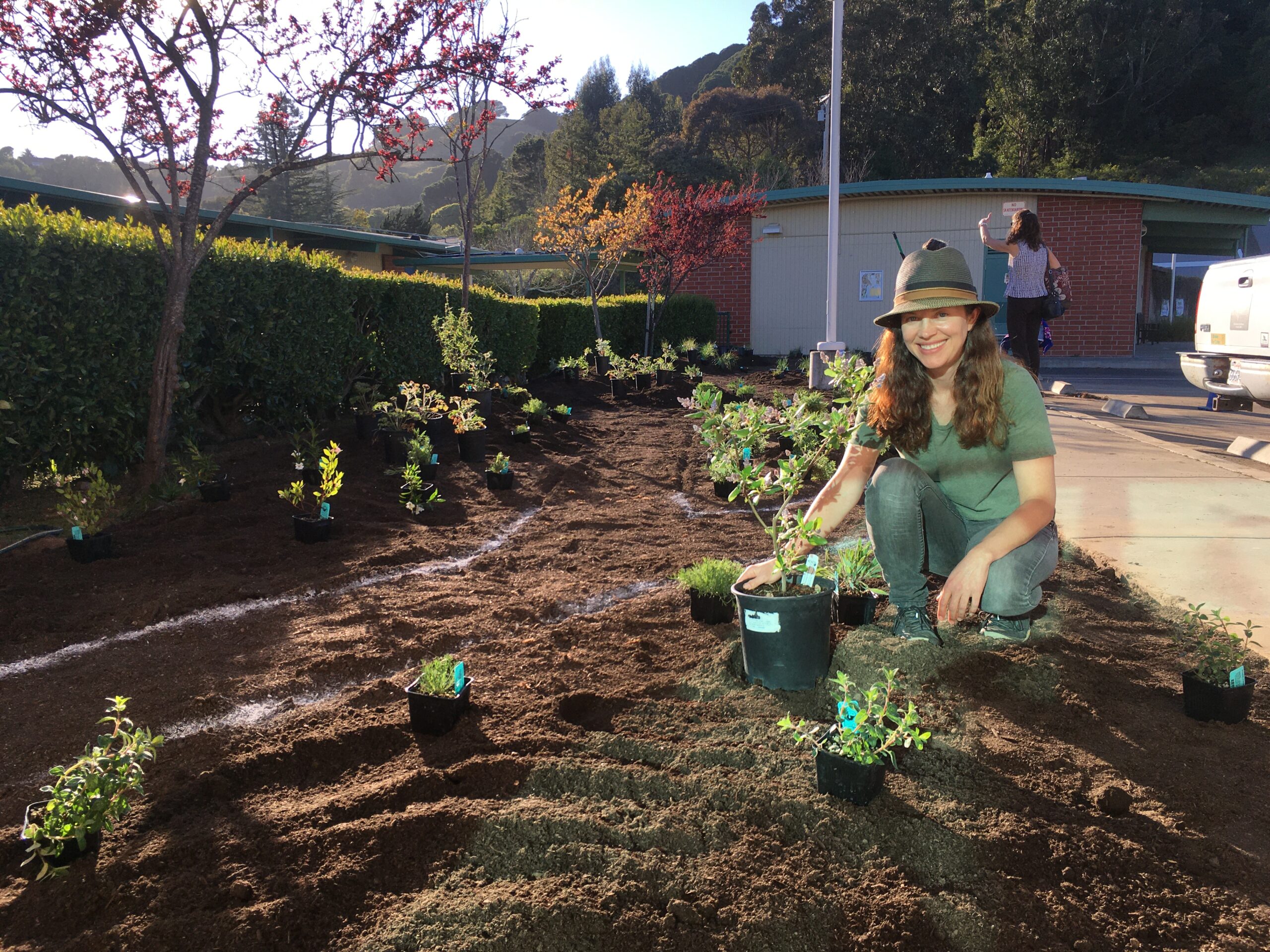
Nursery Manager Audrey Fusco lays out native plants donated by SPAWN for a pollinator garden
During the most recent Xerces monarch butterfly count last winter, the population of western monarchs was estimated to be 28,418 individuals. While the population has held steady over the past year, a count done in 2018 showed an 86% decrease in the population between 2017 and 2018. Many factors have contributed to the decline of western monarchs including use of pesticides and herbicides; increased wildfires; loss of habitat; and loss of milkweed, which is necessary to monarchs for reproduction.
To support the recovery of monarch populations, SPAWN is growing narrow-leaf milkweed (Asclepias fascicularis) and a selection of fall and spring-blooming nectar plants that provide monarchs the resources they need to survive. This year SPAWN donated plants and assisted three local schools in creating monarch waystations to support monarchs during their fall and spring migrations.
Students at Glenwood Elementary (San Rafael), Brookside Elementary (Fairfax), and Marin Academy (San Rafael) planted narrow-leaf milkweed and nectar plants on their school grounds which are located near migratory pathways used by monarchs on their way to and from overwintering sites along the coast.

Students plant a pollinator garden at Glenwood Elementary in San Rafael, California.
The largest project was completed at Glenwood Elementary where a 1,125 square-foot area near the front of the school was transformed from a strip of land into a pollinator oasis. The garden contains walking paths, sitting areas, and more than 150 California native plants which supply nectar to a variety of pollinators. The garden was designed with monarchs in mind, and the plants will be in bloom during the time of year when students are around to observe the flowers and the butterflies!
The gardens were created in partnership between the schools, SPAWN, and California Native Plant Society Marin as part of the “Bringing Nature to School” program which encourages schools to plant habitat gardens. Benefits of the program include encouraging students to get outdoors and observe nature; providing an opportunity for hands-on learning; and creating more habitat spaces at schools. We hope students in future years will be able to observe monarch eggs and caterpillars on the milkweed plants and enjoy watching native bees and butterflies visit the school gardens they helped create.




